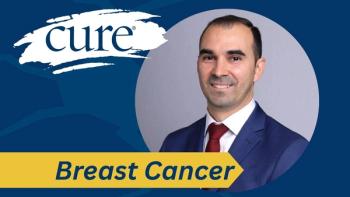
Prostate Cancer Treatment Options: Common Questions in Focal Therapy, Surgery
Key Takeaways
- Localized prostate cancer treatments include radical prostatectomy and focal therapy, with the latter targeting only cancerous areas to preserve healthy tissue.
- Focal therapy allows for active surveillance post-treatment and carries a small infection risk, while effectively destroying cancerous tissue.
Dr. Kelly Stratton answered the most frequently asked questions in prostate cancer regarding localized prostate cancer care, including surgery and focal therapy.
Understanding one’s treatment options is a crucial first step in making informed decisions about care.
When the cancer is contained within the prostate gland, meaning it hasn't spread to other parts of the body, localized treatments are often the primary approach. Two key categories of localized treatment are surgery and focal therapy.
Surgery, typically a radical prostatectomy, involves the complete removal of the prostate gland. This has been a standard treatment for many years and can be very effective in eradicating the cancer.
More recently, focal therapy has emerged as a less invasive approach for carefully selected patients. Instead of treating the entire prostate, focal therapy aims to target and destroy only the cancerous areas within the gland, while preserving the healthy tissue. With this approach the hope is to potentially reduce some of the side effects associated with whole-gland treatments.
In tandem with CURE’s Educated Patient Prostate Cancer Summit, Dr. Kelly Stratton answered common queries related to these treatment options for localized prostate cancer. Stratton, who served as the summit chair, is an assistant professor of urologic oncology in the OU Department of Urology and serves as an adjunct assistant professor of medical oncology at the Stephenson Cancer Center.
Focal Therapy
Question: Can focal therapy target a specific area of concern within the prostate, and is it possible to resume active surveillance afterward?
Answer: Yes. Focal therapy can be used to treat a targeted area. Patients often are followed on active. surveillance after treatment.
Question: Do focal therapies destroy cancerous tissue? Is there a risk of infection associated with these treatments?
Answer: These focal therapies lead to prostate cancer cell death. Usually the cancer death causes scarring and fibrosis of the tissue. Occasionally there can be passage of tissue. Infection is a small risk with these procedures.
Question: What future treatment or salvage options might be available to someone who previously received radiation and hormone therapy? How is the effectiveness of my current hormone therapy monitored?
Answer: For patients on hormonal therapy, we monitor their PSA regularly. If the PSA is staying low and not increasing, it gives us proof that the treatment is working. We may also occasionally get imaging to confirm. If the PSA is rising, then we will evaluate for metastatic disease and consider additional treatment.
Prostate Cancer Surgery
Question: In what situations is it not possible to perform nerve-sparing surgery during a radical prostatectomy?
Answer: When the cancer is located near the nerves, it can be very difficult to do nerve sparing and still maintain a negative margin. So, in those instances, we may need to take part or all of the nerves to ensure complete removal of the cancer.
Question: What is the likelihood of experiencing erectile dysfunction after the surgical removal of the prostate and potentially the bladder?
Answer: Erectile dysfunction is variable after prostate removal. This depends often if nerve sparing is possible. For patients with bilateral nerve sparing, the preservation of erectile function is the highest.
Question: What treatment options are available if prostate cancer with cribriform and intraductal features recurs after surgery and becomes resistant to hormone therapy?
Answer: When patients have hormone resistant prostate cancer, we generally add additional agents like chemotherapy (docetaxel) or additional androgen drugs (Zytiga [abiraterone]) to treat the cancer.
Question: What treatment options are available after surgery if localized, aggressive prostate cancer potentially recurs and becomes hormone resistant?
Answer: Hormone resistant is cancer that is growing even while on androgen deprivation therapy (a very low or zero testosterone). For these patients, chemotherapy, immunotherapy, and additional androgen ablation drugs may be used depending on the specific patient and their clinical characteristics.
For more news on cancer updates, research and education, don’t forget to




